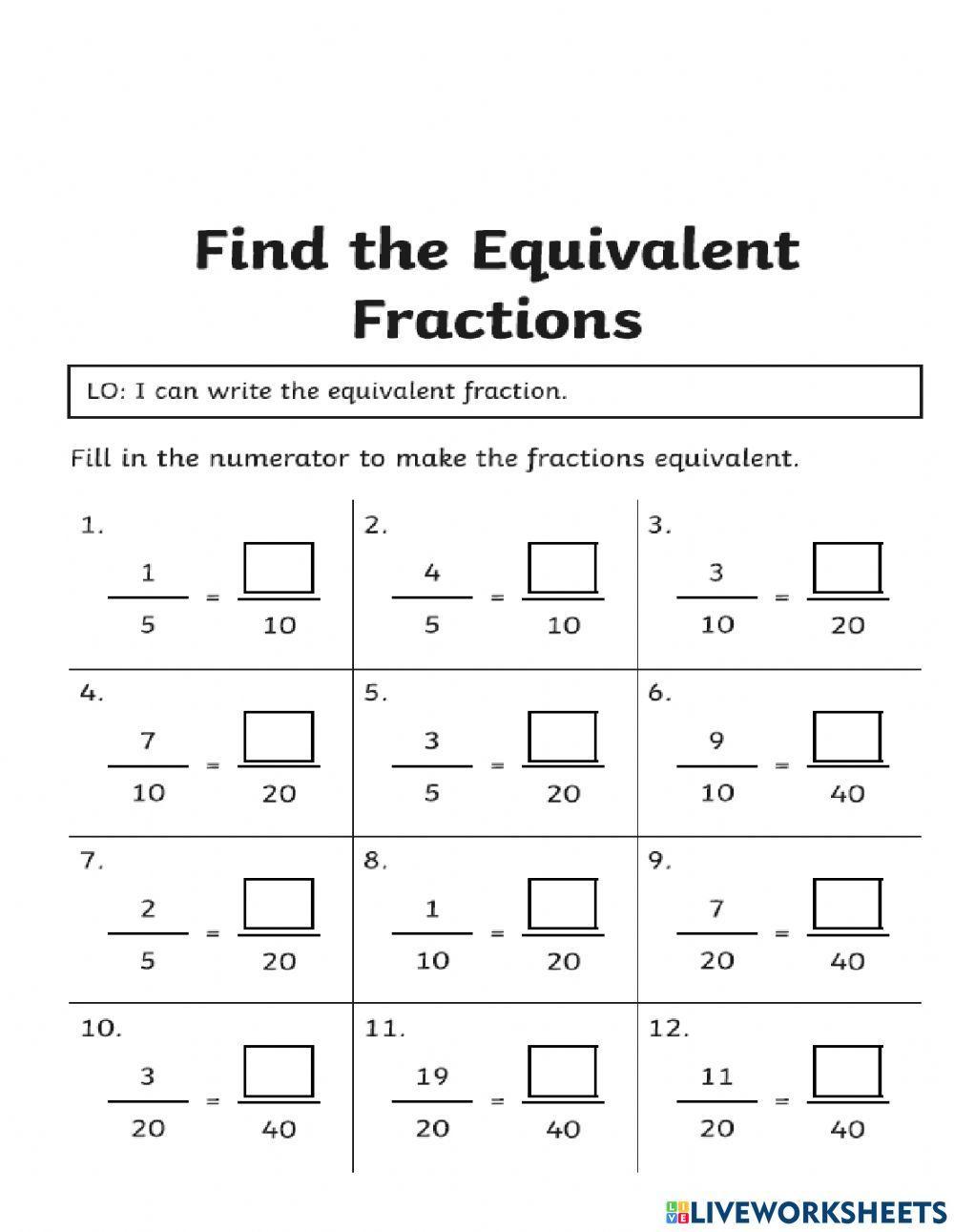Loading ad...
Miembro desde hace
3 years 7 monthsEdad: 8-13
Level: Grade 4
Idioma: English
(en)
ID: 912524
15/04/2021
Country code: BS
Country: Bahamas
Tema principal: Fractions (2013150)
Equivalent fractions finding the missing number
Share / Print Worksheet
